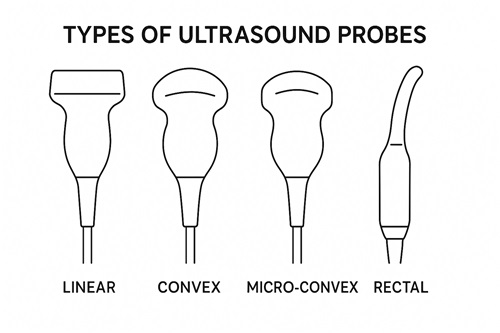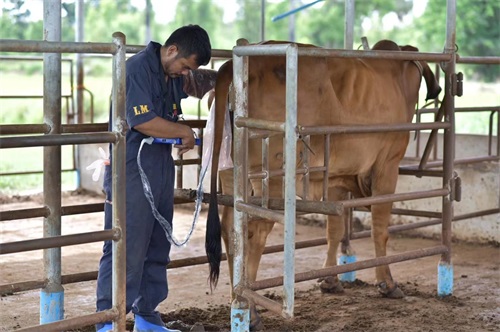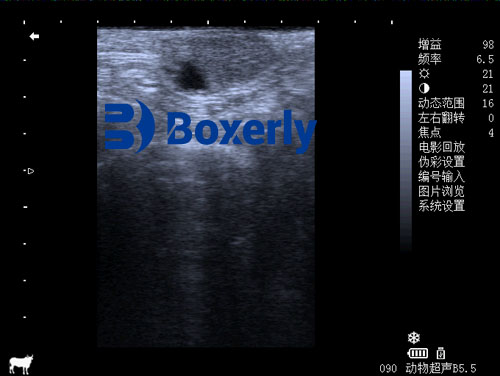As a veterinary professional, selecting the right ultrasound machine is a crucial decision. The right equipment can enhance the accuracy of your diagnoses and streamline your workflow, making it easier to provide the best care to animals. With various types of ultrasound machines available on the market, it’s essential to know what to look for in order to make an informed choice. In this guide, we’ll explore the key considerations when selecting an ultrasound machine, as well as some tips and recommendations to help you make the best choice for your practice.

1. Understanding the Importance of Ultrasound in Veterinary Care
Ultrasound is a non-invasive imaging technique that uses sound waves to produce detailed images of the internal structures of animals. It’s particularly useful for examining soft tissues and organs that may not be visible through X-rays. In veterinary medicine, ultrasound is commonly used for pregnancy diagnostics, internal injury assessments, and for evaluating organs such as the heart, liver, kidneys, and more.
Before selecting an ultrasound machine, it’s important to understand the specific needs of your practice. For example, if you primarily deal with large animals like horses or cattle, you may need a more robust and powerful system designed for larger body sizes. Conversely, if your focus is on small animals like dogs and cats, a more compact and portable machine may be sufficient.

Ecuador Customer Tests the Clarity of BXL Equipment
2. Key Features to Consider
When choosing an ultrasound machine, there are several important features to keep in mind to ensure it meets your needs:
a. Image Quality
The clarity of the images produced by an ultrasound machine is essential for accurate diagnoses. High-resolution images can help identify issues that might otherwise be missed. Look for machines that offer clear and detailed images, especially when working with small or difficult-to-diagnose animals.
b. Portability
In some veterinary practices, particularly those in rural areas, portability is key. Mobile ultrasound machines are lightweight, compact, and easy to transport, making them ideal for on-the-go use. If you plan to take your ultrasound equipment to farms, outdoor clinics, or remote locations, a portable machine could be a game-changer.
c. Probes
Ultrasound probes, or transducers, come in various shapes and sizes depending on the type of animal and the area of examination. For example, a linear probe is ideal for examining superficial structures, while a convex probe is better suited for deeper tissue examinations. Ensure that the ultrasound machine you choose has a variety of probe options or one that suits your most common use cases.

VET-ULTRASOUND PROBES
d. Depth of Imaging
The depth of imaging refers to how deep the ultrasound waves can penetrate the body. For large animals, you’ll need a machine with the ability to penetrate deeper tissues, while smaller animals may not require as much depth. Consider your patient base when evaluating this feature.
e. Ease of Use
Veterinary practices can get busy, and efficiency is key. Choose an ultrasound machine that is user-friendly, with intuitive controls and an easy-to-navigate interface. Some systems also offer touchscreen controls for quick adjustments, which can help streamline your diagnostic process.
f. Cost and Maintenance
Veterinary ultrasound machines can vary greatly in price. While it may be tempting to go for the least expensive option, it’s essential to balance cost with the quality and features required for your practice. Additionally, consider the long-term maintenance and service costs associated with the machine. A slightly higher initial investment may pay off in the long run if it offers better durability and lower maintenance needs.

3. Types of Ultrasound Machines
There are several types of ultrasound machines to choose from, and each type is suited to specific veterinary needs:
a. Portable Ultrasound Machines
Portable ultrasound machines are compact, lightweight, and ideal for fieldwork. They allow vets to perform quick exams without needing to move the animal to a clinic. This type of machine is perfect for mobile veterinary services or for farms where large animals need regular check-ups.
b. High-End Diagnostic Ultrasound Machines
These machines are designed for in-depth analysis and provide high-quality images, which is crucial for specialized diagnostic purposes. They tend to be larger and heavier but offer advanced features like high-resolution imaging, longer battery life, and multiple probe options. These machines are perfect for veterinary practices with high patient volumes or those that require more complex diagnostics.
c. Handheld Ultrasound Machines
If you’re looking for something ultra-portable, handheld ultrasound machines are a great option. These devices are small and easy to use, making them perfect for quick exams in the field. Though they don’t always offer the same level of image quality as larger systems, they can still be quite effective for basic diagnostics.

Bovine Corpus Luteum Ultrasound Imaging
4. The Role of Software and Technology
Modern ultrasound machines often come equipped with advanced software that can enhance your diagnostic abilities. Look for systems that offer features like image storage, automated measurements, and reporting tools. Some machines are even equipped with cloud-based capabilities, allowing you to store and share images and data with colleagues or specialists remotely.
Additionally, advanced imaging technologies such as Doppler ultrasound can help you assess blood flow, which is particularly useful for evaluating heart conditions and other vascular issues. Having access to these technologies can significantly enhance your diagnostic capabilities.
5. Additional Considerations
a. Training and Support
Ultrasound machines come with various features, and it’s important to ensure you and your team are trained to use them effectively. Look for manufacturers who offer comprehensive training and customer support. Proper training can make a significant difference in the accuracy and efficiency of your exams.
b. Customer Reviews and Recommendations
Before making a final decision, it’s always helpful to read reviews and ask other veterinary professionals about their experiences with different ultrasound machines. Peer recommendations can give you insight into the machine’s reliability, ease of use, and overall performance in a clinical setting.
c. Warranty and Service
Be sure to inquire about the warranty and service packages offered by the manufacturer. A good warranty can provide peace of mind, ensuring that any necessary repairs or maintenance are covered. Consider the length of the warranty and what services are included.

Conclusion
Choosing the right ultrasound machine for your veterinary practice is a decision that should be made with careful consideration. Focus on your specific needs—whether you’re working with large animals, small animals, or both—and prioritize features like image quality, portability, and ease of use. With the right ultrasound system, you can improve your diagnostic capabilities, enhance your patient care, and streamline your practice’s workflow.